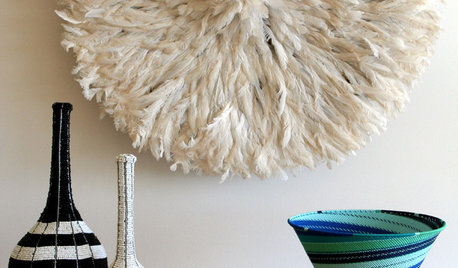Hippeastrum culture --- No One Is Correct
joshy46013
12 years ago
Related Stories

ARCHITECTURERoots of Style: Many Cultures Make Their Marks on Mediterranean Design
If you live in California, Florida or certain other parts of the U.S., your architecture may show distinct cultural influences
Full Story
DECORATING GUIDESCulture an African Look With Artifacts
A ceremonial headdress, a carved wood stool for a king ... African artifacts bring culture and significance to the home
Full Story
KITCHEN DESIGN9 Popular Stovetop Options — Plus Tips for Choosing the Right One
Pick a stovetop that fits your lifestyle and your kitchen style with this mini guide that covers all the basics
Full Story
TASTEMAKERSAsk an Expert: What Is the One Design Rule You Live By?
Eight home experts share their top design rules
Full Story
ARCHITECTURERoots of Style: Origins and Interpretations of the Bungalow
Bungalows translate effortlessly across continents and cultures to adapt comfortably to many styles and regions
Full Story
ARCHITECTURECity View: Nashville Design Finds Its Rhythm
Styles are evolving from pure traditional in this world-famous Southern city, but history and culture remain points of pride
Full Story
HOUZZ TOURSMy Houzz: African Art and Midcentury Style in a Louisiana Home
Global mementos and classic modern furnishings come together in a couple’s one-of-a-kind home and artist’s studio-residence
Full Story
COMMUNITYCommunity Building Just About Anyone Can Do
Strengthen neighborhoods and pride of place by setting up more public spaces — even small, temporary ones can make a big difference
Full Story
DECORATING GUIDESWhat Matisse Can Teach Us About Interior Design
Learn to pack a punch with decor inspired by one of the most influential artists of the 20th century
Full Story
DECORATING GUIDES12 Antique Store Finds to Nab Now, Place Later
See the accessories one decorator always buys when she spots them — as long as she gets there first
Full Story





dondeldux z6b South Shore Massachusetts
allstarsgymnast7
Related Professionals
Camas Landscape Architects & Landscape Designers · Fort Lee Landscape Architects & Landscape Designers · Kyle Landscape Architects & Landscape Designers · Simi Valley Landscape Architects & Landscape Designers · Cicero Landscape Contractors · Eustis Landscape Contractors · Fort Wayne Landscape Contractors · Indio Landscape Contractors · Methuen Landscape Contractors · Painesville Landscape Contractors · Sugar Hill Landscape Contractors · Watertown Landscape Contractors · Woodland Landscape Contractors · Oxon Hill Landscape Contractors · Bakersfield Swimming Pool Buildersjodik_gw